CAS Award: WADA v. Lallukka, CAS 2014/A/3488, November 20, 2014
FACTS
In September 2011, the Finnish cross-country skier Juha Lallukka (the “skier”), a National-Level Athlete affiliated with the Finnish Ski Association, was subjected to an Out-of-Competition test. The analysis returned an Adverse Analytical Finding for recombinant human Growth Hormone (“rhGH”, a synthetic form of exogenously administered hGH). Exogenous human Growth Hormone is a non-Specified Substance included in class S2 of the World Anti-Doping Agency’s (“WADA”) Prohibited List. The WADA-accredited laboratory in Helsinki used the Isoform Differential Immunoassays test and reported the Sample positive based on the fact that the ratios between the various relevant isoforms detected in the Athlete’s Sample exceeded the decision limits as set in the relevant WADA Guidelines,[1] i.e. the ratio values above which anti-doping laboratories are to report an Adverse Analytical Finding, The skier denied having ever used rhGH and requested the analysis of his B Sample, the results of which again exceeded the decision limits, thus confirming the positive test.
NATIONAL-LEVEL PROCEEDINGS
At the national-level, the skier successfully challenged the reliability of the decision limits in a disciplinary process that took over two years to complete. The extended duration at the first-instance, conducted before the FINADA (Finnish National Anti-Doping Agency) Supervisory Board, was due to Juha Lallukka’s request in January 2012 for a stay of his proceedings in anticipation of the Court of Arbitration for Sport (“CAS”) award in the Veerpalu matter,[2] in which an Estonian skier, Andrus Veerpalu, had also challenged the reliability of the decision limits in the test for rhGH. In March 2013, the Veerpalu CAS award was released publically, finding that the decision limits for the rhGH test enshrined in the WADA rhGH Guidelines were not sufficiently reliable and, therefore, that Andrus Veerpalu could not be found to have committed an anti-doping rule violation. The FINADA Supervisory Board resumed the proceedings against Juha Lallukka, and in line with the Veerpalu decision, also found that the decision limits in the rhGH test were unreliable. In addition, the Supervisory Board found that FINADA had not provided sufficient scientific evidence that the revised decision limits would not be set at values higher than the ratios observed in the skier’s Sample. The Board consequently found that no anti-doping rule violation had been committed. The decision was appealed by FINADA to the Finnish Sports Arbitration Board, which confirmed the decision in December 2013.
CAS PROCEEDINGS
WADA appealed the Finnish Sports Arbitration Decision to the CAS on the main ground that the decision limits had subsequently been verified by two independent studies (McGill University in Montreal and University of Descartes in Paris), which had been merged into the so-called “Joint Publication Paper”. It also submitted that, in any event, the skier’s ratios were so high that they “constitute[d] overwhelming evidence of administration of exogenous hGH, irrespective of whether the decision limits as set in WADA’s Guidelines are reliable or not”[3].
In his answer, the skier objected to procedural aspects of his case, in addition to his argument on the merits that the decision limits remained unreliable. He argued that the appeal was inadmissible for belated filing and asserted that that applying the new decision limits and scientific validation of a test that took place after his Sample collection would amount to an “impermissible retroactive application of the law”.[4] Per the decision limits, he argued that the Joint Publication Paper published as a result of the two independent studies commissioned by WADA as a result of the Veerpalu award left unanswered some issues raised by the CAS panel in this award, so the decision limits were still unreliable, but that he did “no have the financial means to substantiate his allegations in this regard”[5]. The skier, named as a sole respondent in the CAS proceedings, was granted legal aid by the International Council of Arbitration for Sport, to cover the travel and accommodation costs of the skier and his counsel to a hearing, as well as for experts, witnesses or interpreters[6]. While a request for additional legal aid, was denied[7], the panel did agree to forgo an oral hearing and base its decision on the written submissions[8].
After dealing with the skier’s procedural objections and confirming the timeliness of WADA’s appeal, the CAS panel addressed the admissibility of the documents filed by WADA after submission of its appeal brief, which typically represents the last moment in the proceedings for the appellant party to file evidence in CAS appeal proceedings (Article R51 of the CAS Code). In the particular matter, the documents at stake were the revised 2014 WADA rhGH Guidelines, as well as the final version of the Joint Publication Paper arising from the studies conducted after the Veerpalu award. The panel considered that the documents had only been made available to WADA after the submission of its appeal brief, that these documents addressed the core of essential questions in the proceedings, as well as the fact that the skier had failed to submit additional comments on these documents – in spite of having been invited to do so – and had not objected to their production. Accordingly, the CAS panel found that “exceptional circumstances” within the meaning of Article R56 of the CAS Code were realized and the new evidence should be admitted on the record[9].
Turning to the merits, the CAS panel first resolved the issue of whether an anti-doping rule violation had been committed in the affirmative, and second, decided on appropriate sanction. For the analysis of the existence of an anti-doping rule violation, the CAS panel started by recalling that the burden of proof is on the Anti-Doping Organization to establish an anti-doping rule violation to the comfortable satisfaction of the panel [Article 3.1 of the World Anti-Doping Code (“WADC”)]. The panel also emphasized that the skier had not challenged that the analysis of his Sample was performed correctly in the particular matter, but only submitted that the decision limits determined by WADA are unreliable and that he could not exclude the possibility that there might be some physiological or scientific explanation for his high ratios[10].
Since the skier relied primarily on the findings in the Veerpalu award, the CAS panel also stressed that significant developments had taken place in the meantime, in particular[11]:
- In the Sinkewitz award of February 2014, [12] a CAS panel had ruled that the Athlete’s values were “so high that there was no borderline situation which might trigger the benefit of uncertainty in favour of the athlete”;
- WADA had commissioned new studies with the purpose of addressing the issues raised by the CAS panel in Veerpalu;
- The WADA rhGH Guidelines had been updated to reflect the latest revised decision limits based on the Joint Publication Paper drawn from these studies.
The CAS panel turned to assessing how the Joint Publication Paper addressed the “main points of contention” raised in Veerpalu [13]. As a starting point, the panel recalled the reasoning in Veerpalu whereby the Anti-Doping Organization bears the burden of showing that a violation occurred “by means of a test that is scientifically reliable”[14], which includes the decision limits. Reviewing what it considered the three main points of contention (insufficient sample size, inappropriate exclusion of certain sample data, uncertainties related to the distribution model used), the CAS panel concluded that in its opinion “the Joint Publication Paper responded adequately to the concerns expressed” in Veerpalu[15].
The panel ended this part of its analysis with a few remarks regarding its role in weighing expert opinions, insisting that it is “not its function to step into the shoes of scientific experts”, but that its role is nevertheless “to determine whether the experts’ evaluations […] are soundly based on the facts, and whether the experts consequent appreciation of the conclusion be derived from those facts is equally sound”[16]. In the particular matter, the panel considered as relevant factors[17]: i.) the fact that the studies and Joint Publication Paper were “the fruit of a collaborative effort by two independent teams of experts”, ii.) that the study was based on a “considerable and large dataset, which has been peer-reviewed and accepted for publication”, and iii.) that the study “is said to establish decision limits with a 99.99% specificity”. Based on these factors, the panel declared that “it is not immediately apparent to the Panel how it could conclude that the Joint Publication Paper may be said to be unreliable”, and therefore found itself comfortably satisfied of the reliability both of the test and of the decision limits. According to the CAS panel, this meant the burden of proof was on the Athlete to establish “any particular departure or departures that could have led to a false-positive finding”. However, the CAS panel went on immediately to state that the skier had only offered submission by way of speculation and thus had failed to establish how some points raised in the first study “could reasonably have caused a false positive”[18].
The CAS panel finally noted that the revised decision limits were “quite close” to the decision limits in the previous version of the WADA rhGH Guidelines, so that the decision limit “did not vary in a magnitude that brings them anywhere near the ratio values found on the Athlete”[19]. In this respect, turning to a different limb of the reasoning, the CAS panel sought support from the Sinkewitz award, considering the following findings relevant: i.) neither the Sinkewitz nor the Lallukka cases were “borderline situations”, in the sense that the ratios in both cases were “far higher” than WADA’s decision limits, ii.) in fact, Juha Lallukka’s ratios were even higher than Patrick Sinkewitz’, “and significantly so”, iii.) the decision limits are mere recommendations to the WADA-accredited laboratories, not legally binding as such and therefore do not have the “legal force to distinguish between doping […] and non-doping […]”[20]. The panel cited the paragraph in which the Sinkewitz panel relied on expert opinions confirming that the Patrick Sinkewitz ratio values were clearly indicative of the presence of rhGH[21]. In a final comment, the panel observed that the Athlete had submitted no evidence showing that his ratio values could have been affected by individual circumstances, and, consequently, “the Athlete is not in a position to prove to the comfortable satisfaction [sic] of the Panel that external factors may have had an impact on his ratio values, which could have led to a false positive”[22].
The CAS panel addressed a further objection of the Athlete, whereby the Athlete claimed that applying the revised decision limits to his analysis conducted in 2011 would amount to an impermissible retroactive application of the law. The CAS panel reiterated its position that the decision limits “are not rules as such”, but are described in Guidelines and “merely constitute figures upon which reliance may be placed by means of evidence to determine whether an anti-doping violation has or has not occurred in application of the rules”. The evidence adduced by WADA to this effect had been admitted to the CAS proceedings, confirming that the skier’s ratio values were “at a level that violate the applicable rules, irrespective of whether one places reliance on level set by the 2010 Guidelines or the higher level that later emerged”[23]. Recalling that the prohibition of retroactivity does not apply to evidentiary matters, the CAS panel rejected the objection.
In terms of due process, the CAS panel also rejected the skier’s claims for compensation against WADA for undue delays in the proceedings, holding that WADA had “dealt with the Athlete’s situation without undue delay and conducted itself in a fashion which is beyond reproach and scrupulously, in accordance with the interests of all the parties”[24].
Having considered itself comfortably satisfied that the analytical findings revealed the presence of rhGH and thus that an anti-doping rule violation occurred, the CAS panel turned to the determination of the appropriate sanction. The CAS panel refused to follow WADA’s claims that the facts of the matter, i.e. the detection of rhGH or that fact that the skier had chosen to contest the allegations, could per se represent an aggravating circumstance under Article 10.6 of the Finnish Anti-Doping Regulations (equivalent to Article 10.6 of the 2009 WADC). Accordingly, the CAS panel imposed a standard two-year Ineligibility period, but gave the skier credit of the Provisional Suspension and refused – for fairness reasons – to disqualify results achieved in the period during which the skier had been “cleared” by his two national hearing panels[25].
COMMENTS
Various readings of the Lallukka award are possible. In the eyes of WADA, the Lallukka award puts a definitive end to the uncertainties triggered by the Veerpalu award and demonstrated the capacity of the anti-doping movement to successfully react to a challenge to the scientific reliability of analytical tools[26]. Others may view the “rhGH trilogy” (Veerpalu, Sinkewitz, Lallukka) that has been playing before CAS for the past two years as a textbook illustration of the ambiguities surrounding the legal status of WADA “technical” rules, and of the manner in which CAS panels struggle to come to terms with the increasing complexity of analytical tools in anti-doping science. In any event, the award opens a variety of paths for further discussion, all of which would be worthwhile exploring. In this short comment, we focus on those points that appear most revealing of what one might expect in future from CAS panels on similar matters under the 2015 WADC.
The rhGH trilogy had the merit of prompting CAS panels to recall that the basic burden of proof is on the Anti-Doping Organization for all elements of an anti-doping rule violation, even if they are presented with the “supreme” evidence of an Adverse Analytical Finding, and that the scope of this burden encompasses the validity of the analytical science used to produce the analytical finding. In addition, both the Veerpalu and the Lallukka panels made it clear that such proof must cover not only the reliability of the analytical method itself, but also the decision limits used to determine whether the findings are indicative of the presence of a Prohibited Substance. The implementation in the particular matter of the principles stated by the CAS panels, however, is less clear-cut. Both CAS panels, in particular, seemed to have difficulties drawing a line between the scientific reliability of the analytical tools on the one hand (which they declared is for the Anti-Doping Organization to prove to the Panel’s comfortable satisfaction), and whether the procedures established to apply these tools were adhered to in the particular matter on the other hand (which is for the Athlete to prove by a balance of probability). Thus, the panel in Lallukka went through a true back-and-forth in its reasoning, both regarding the burden of proof and the standard of proof. The panel appeared to impose – part of – the burden of proof on the skier for demonstrating that the decision limits were set in sufficiently reliable manner, and concluded on a statement placing a standard of “comfortable satisfaction” on the Athlete that is in contradiction with the explicit terms of the WADC (general rule of Article 3.1).
The same ambiguities are perceivable when it comes to the legal status of the “decision limits” in the rhGH test. Admittedly, the panel in Lallukka was facing a difficult task having to build a coherent reasoning based on the two previous awards, in which each CAS panel had clearly – albeit only implicitly – defended a radically different perception of the role of the decision limits within the rhGH test. Unfortunately, as a result, the Lallukka award does not take a clear position. Thus, the panel both felt compelled to confront the reliability of the revised decision limits enshrined in the new version of the Guidelines with the points of concern raised in Veerpalu, and to reiterate the position of the Sinkewitz panel that these decision limits are not legally binding and represent mere means of evidence used to reveal the presence of rhGH in a Sample. As matters stand, the exact character of the rhGH test therefore remains unsettled, a sign that the historical structure of the WADA technical rules may no longer be adapted to accommodate these types of sophisticated analytical methods for substances that can also be endogenously produced.
Finally, another aspect of the award worth noting is the section that contains the CAS panel’s approach to the evaluation of expert evidence. Of note, these statements seem to rely on thoughts developed in the context of recent Athlete Biological Passport cases[27]. In short, CAS panels are adamant that they do not simply show deference to expert evidence, especially to those experts appearing on behalf of the Anti-Doping Organization. However, the CAS panels are also bound to recognize that their ability to reconstruct the merits of the experts’ opinions is limited, and that they cannot substitute themselves to the experts on technical matters.
These limits are very apparent in the evaluation by the CAS panel in Lallukka of the new studies commissioned by WADA and the Joint Publication Paper, which shows that CAS panels impose upon themselves a form of self-restraint that constrains their inquiry to verifying the process through which the analytical science was developed (peer-review, independence of the study, publication), rather than its actual foundations. Symptomatically, the panel stopped its assessment at noting that the studies claim to guarantee a specificity of 99.99%, but neither assessed whether this claim had a scientific basis, nor indeed whether the specificity ought to be considered appropriate in the particular context. Of note, the panel in Lallukka also insisted on its duty to decide, when confronted with conflicting expert opinions, which of the opinions is more persuasive. This statement, however, is imprecise: if an arbitration panel – or indeed any other judge – is faced with an admitted scientific uncertainty, or truly irreconcilable expert disagreement, they are not forced to make a choice. In this case, the issue can remain undecided and the burden of proof comes into play. This, again, shows how decisive the distribution of the burden of proof is with respect to scientific issues, and the importance of access to expert evidence. Clearly, Athletes have no realistic chance to win a case based on any form of criticism directed against the scientific foundations for the analytical findings or their implications, if they lack the financial means to organize adequate expert evidence. In the particular matter, the skier did not file any expert opinion of his own and the CAS panel decided the matter based on the written file, i.e. without examination of the expert witnesses, so that there was no other scientific evidence on the record than the one produced on behalf of WADA. This left the panel relying on prior evaluation in the two Veerpalu & Sinkewitz awards, along with its own interpretation of the value of the evidence newly produced by WADA and how this new evidence had answered concerns raised in the past.
CAS awards rendered under the 2015 WADC in the near future should bring interesting developments to the above issues, since the revised WADC includes a new Article 3.2.1 that specifically addresses the challenges directed against analytical science, in the form of a new presumption in favor of the validity of such science. The revised 2015 WADC newly and explicitly acknowledges the possibility for Athlete to question the reliability of analytical tools in anti-doping science, but places on the Athlete the burden of proof on these issues.
Article 3.2.1 of the WADC reads as follows:
“Analytical methods or decision limits approved by WADA after consultation within the relevant scientific community and which have been the subject of peer review are presumed to be scientifically valid. Any Athlete or other Person seeking to rebut this presumption of scientific validity shall, as a condition precedent to any such challenge, first notify WADA of the challenge and the basis of the challenge. CAS on its own initiative may also inform WADA of any such challenge. At WADA’s request, the CAS panel shall appoint an appropriate scientific expert to assist the panel in its evaluation of the challenge. Within 10 days of WADA’s receipt of such notice, and WADA’s receipt of the CAS file, WADA shall also have the right to intervene as a party, appear amicus curiae or otherwise provide evidence in such proceeding”.
The new provision is clearly inspired by the rhGH series of cases and covers both a clarification of the evidentiary regime applicable to the validity of analytical tools in anti-doping science, and procedural guidance in case of challenges brought against this validity. Undoubtedly, the first cases of application of this new provision will require CAS panels to interpret both its scope and its interplay with the CAS Code.
Copyright April 29, 2015 by the WADC Commentary team
[1] WADA Guidelines: hGH isoform differential immunoassays for anti-doping analyses, “WADA rhGH Guidelines”
[2] CAS 2011/A/2566, Veerpalu v. International Ski Federation (FIS), 25 March 2013.
[3] CAS 2014/A/3488, WADA v. Lallukka, 20 November 2014, para. 46.
[4] CAS 2014/A/3488, WADA v. Lallukka, 20 November 2014, para. 48.
[5] CAS 2014/A/3488, WADA v. Lallukka, 20 November 2014, para. 48.
[6] CAS 2014/A/3488, WADA v. Lallukka, 20 November 2014, para. 33.
[7] CAS 2014/A/3488, WADA v. Lallukka, 20 November 2014, para. 42.
[8] CAS 2014/A/3488, WADA v. Lallukka, 20 November 2014, paras 41-44.
[9] CAS 2014/A/3488, WADA v. Lallukka, 20 November 2014, paras 66-72.
[10] CAS 2014/A/3488, WADA v. Lallukka, 20 November 2014, para. 80.
[11] CAS 2014/A/3488, WADA v. Lallukka, 20 November 2014, para. 81.
[12] CAS 2012/A/2857, NADA v. Sinkewitz,
[13] CAS 2014/A/3488, WADA v. Lallukka, 20 November 2014, paras 83 et seq.
[14] CAS 2014/A/3488, WADA v. Lallukka, 20 November 2014, para. 83.
[15] CAS 2014/A/3488, WADA v. Lallukka, 20 November 2014, para. 96.
[16] CAS 2014/A/3488, WADA v. Lallukka, 20 November 2014, para. 97.
[17] CAS 2014/A/3488, WADA v. Lallukka, 20 November 2014, para. 98.
[18] CAS 2014/A/3488, WADA v. Lallukka, 20 November 2014, para. 99.
[19] CAS 2014/A/3488, WADA v. Lallukka, 20 November 2014, paras 100-101.
[20] CAS 2014/A/3488, WADA v. Lallukka, 20 November 2014, paras 103-106.
[21] CAS 2014/A/3488, WADA v. Lallukka, 20 November 2014, para. 107.
[22] CAS 2014/A/3488, WADA v. Lallukka, 20 November 2014, para. 109.
[23] CAS 2014/A/3488, WADA v. Lallukka, 20 November 2014, para. 113.
[24] CAS 2014/A/3488, WADA v. Lallukka, 20 November 2014, para. 120.
[25] CAS 2014/A/3488, WADA v. Lallukka, 20 November 2014, paras 127-137.
[26] See in particular the press release WADA made on occasion of the case, stressing that the CAS panel in Lallukka confirmed all concerns surrounding the rhGH test – in particular those raised in the Veerpalu award – were resolved, leaving no doubts left regarding the validity and reliability of the newly published version 2.1 of the WADA rhGH Guidelines https://www.wada-ama.org/en/media/news/2014-11/wada-statement-on-the-juha-lallukka-case (accessed 31.03.15).
[27] See e.g. CAS 2010/A/2235, UCI v. Valjavec & OC Slovenia, para. 79.

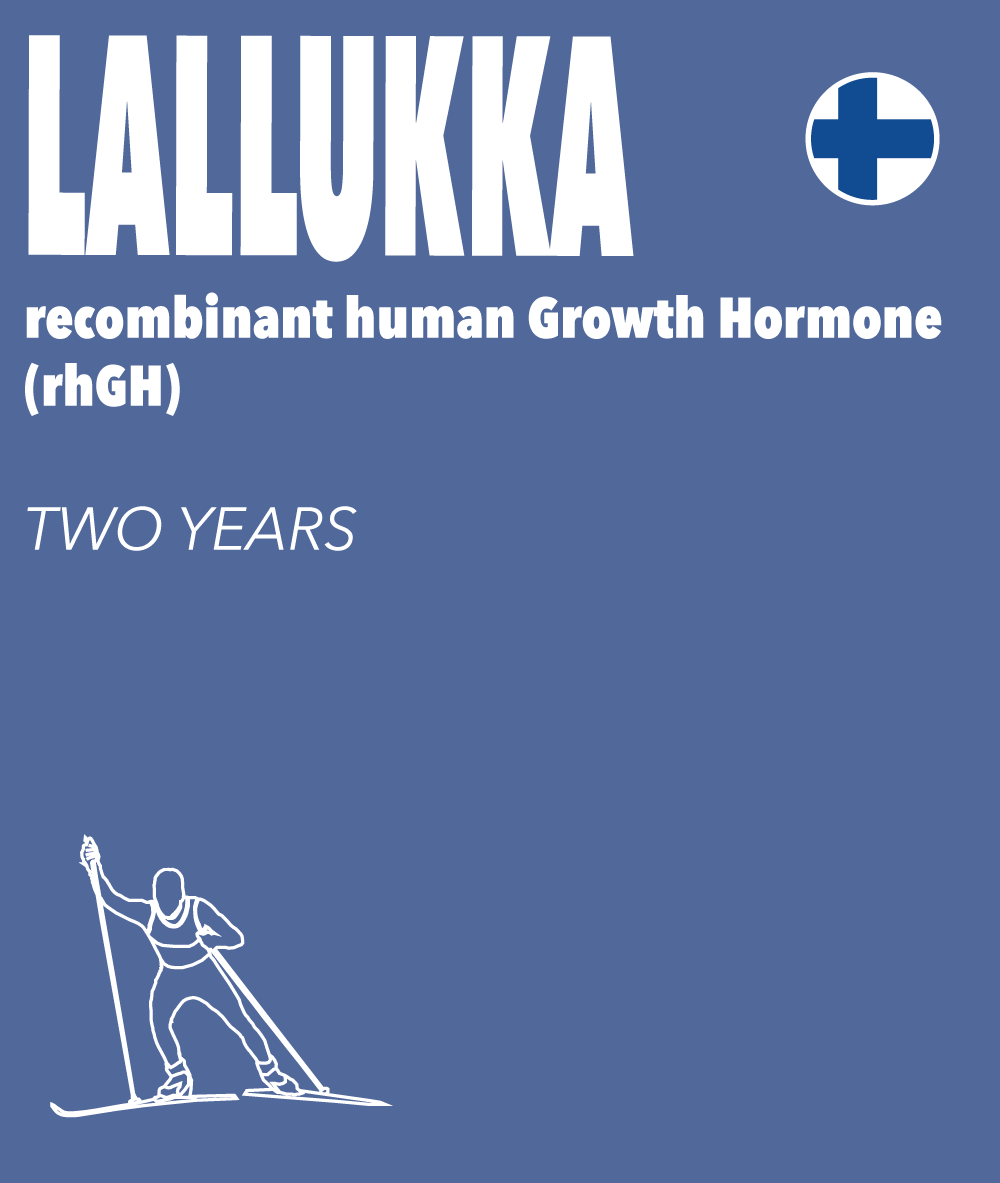
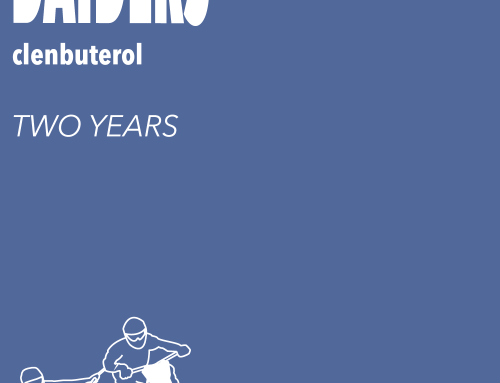
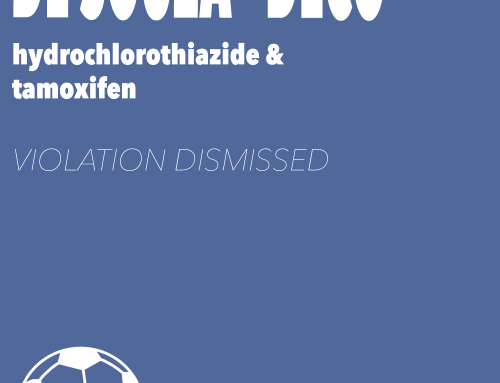

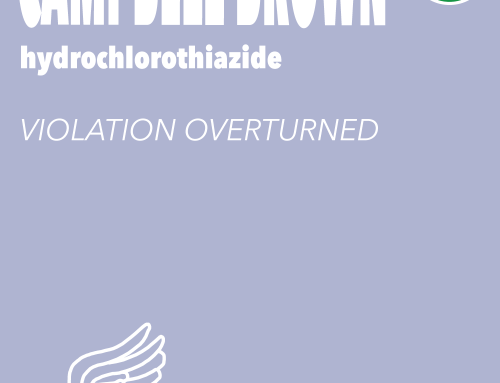
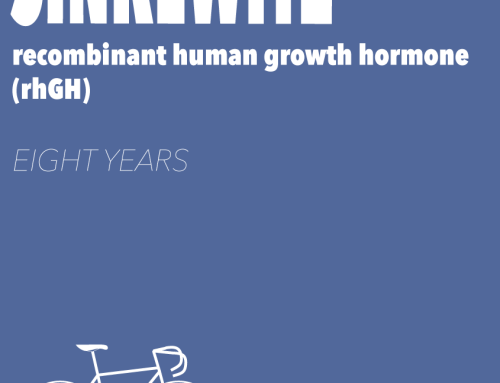
Leave A Comment